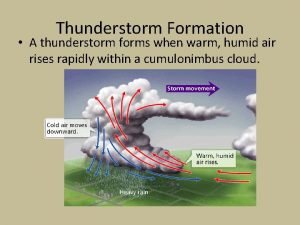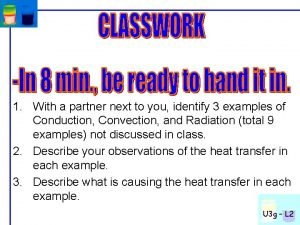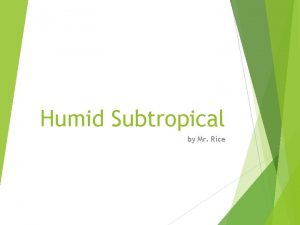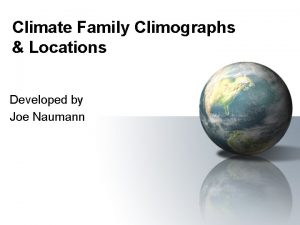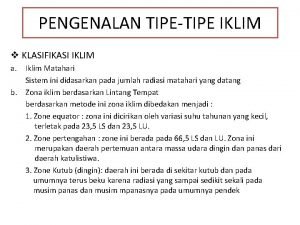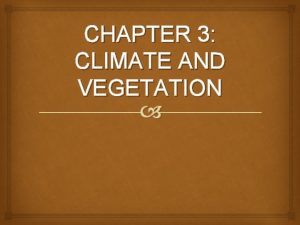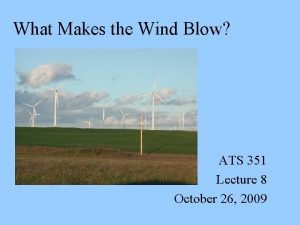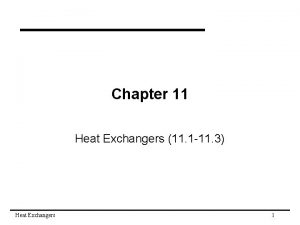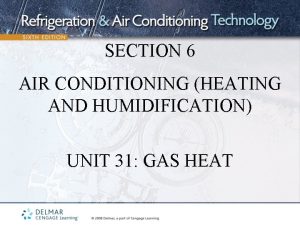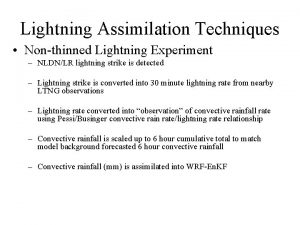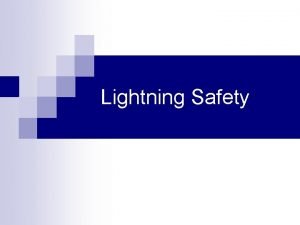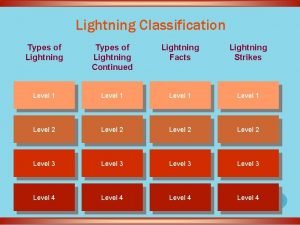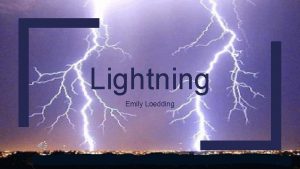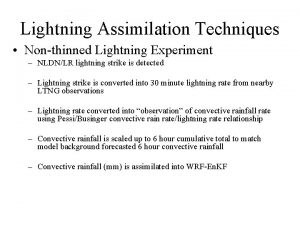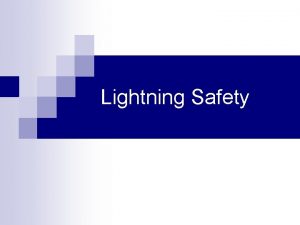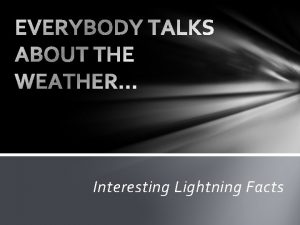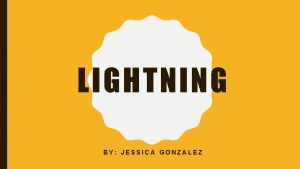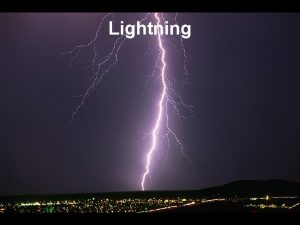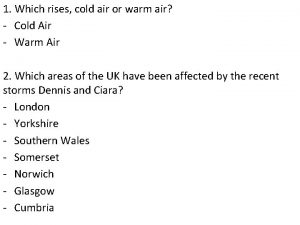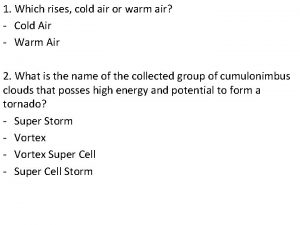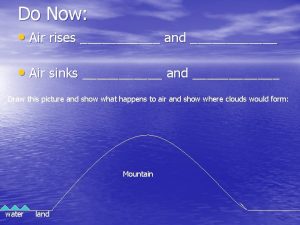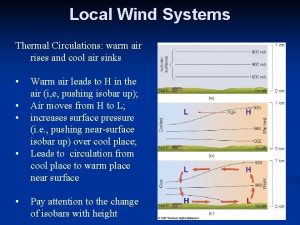Lightning n When warm humid air rises in






















- Slides: 22

Lightning


n. When warm humid air rises in an unstable atmospheric environment, THUNDERSTORMS are produced.

n. At any one time, there about 1800 thunderstorms in progress is the Earth’s atmosphere.

n. Lightning strikes the Earth about 100 times every second, with some bolts releasing over 100 million volts.

n. As the less dense warm air rises, FRICTION is produced between warm and cooler air masses.

What type of current is this? n. Convection

Describe the following transfers of heat energy. n Conduction n energy is transferred from molecule to molecule by direct contact

Convection n the transfer of heat by the circulation or movement of the heated parts of a liquid or gas

Radiation n the process in which energy is emitted as particles or waves.

n. Friction from the convection current causes a static CHARGE to form on the exterior of the cloud.



n. The charged cloud causes a static CHARGE to form on the ground below.

n As more friction occurs, the amount of CHARGE builds up.

n Static electricity builds up on the surfaces of objects and tends to concentrate on POINTS of objects. n That is why tall, pointed objects such as trees and church steeples are likely to attract LIGHTNING strikes.

Lightning Safety n Outside n n n Look for shelter -- a building or a car (Faraday cage video). Nowhere to go? No trees or water. Put your feet as close together as possible and crouch down with your head as low as possible without touching the ground. Never lay down on the ground. After lightning strikes the ground, there is an electric potential that radiates outward from the point of contact.

Lightning Safety n Indoors n n Stay off the phone. If lightning strikes the phone line, the strike will travel to every phone on the line Stay away from plumbing pipes. If lightning strikes near the house it could impart an electrical charge to the metal pipes used for plumbing. More and more PVC pipe is used for indoor plumbing so this is less of a threat.

n. So the main objective of a lightning rod is to DIFFUSE the charge build up on an object into the atmosphere; its secondary objective is to conduct CHARGES to Earth.

n Not very many charges can fit onto the small, sharp point of a lightning rod, so they tend to “LEAK OFF” into the air around the rod, creating room for more incoming charges.

n The net result of this is to DECREASE the total charge on the object, thus decreasing the likelihood of the object being struck by lightning. The lightning rod was invented by Benjamin Franklin in 1752.

MYTH BUSTERS n Ben Franklin was not struck by lightning. Contrary to popular beliefs, had the kite/key actually been struck, Mr. Franklin would surely have been killed. He noticed that the fibers in the kite rope stood up, showing that lightning was made up of static charges.
 Thunderstorms form when warm, humid air rises in
Thunderstorms form when warm, humid air rises in Which blow over long distances?
Which blow over long distances? Cold air mass overtakes warm air mass
Cold air mass overtakes warm air mass Two cold air masses converge on a warm air mass
Two cold air masses converge on a warm air mass Warm water rises in a lake. cold water descends.
Warm water rises in a lake. cold water descends. Air higroskopis air kapiler dan air gravitasi
Air higroskopis air kapiler dan air gravitasi Humid subtropical climate
Humid subtropical climate Tropical rainforest climograph
Tropical rainforest climograph Loose-fitting clothing
Loose-fitting clothing Iklim humid
Iklim humid Tropical humid climate
Tropical humid climate Humid superlative
Humid superlative Diagram iklim koppen
Diagram iklim koppen Humid seal
Humid seal Humid subtropical climate
Humid subtropical climate Humid continental def
Humid continental def Humid subtropical climate
Humid subtropical climate Warm air aloft is normally associated with
Warm air aloft is normally associated with Label the map with the weather conditions brainpop
Label the map with the weather conditions brainpop Warm air front
Warm air front Warm air front
Warm air front A counterflow concentric tube heat exchanger
A counterflow concentric tube heat exchanger Is methane lighter than air
Is methane lighter than air
